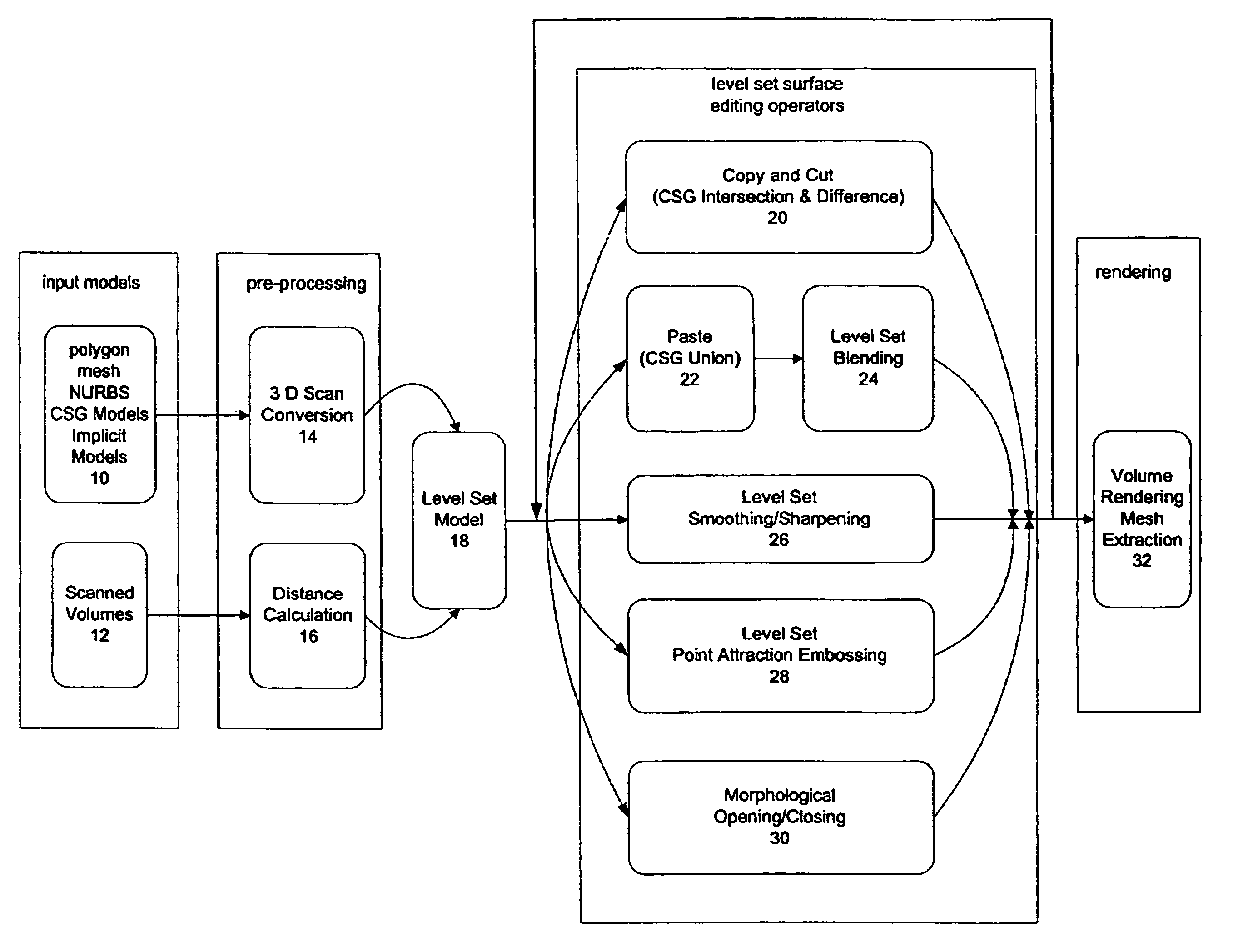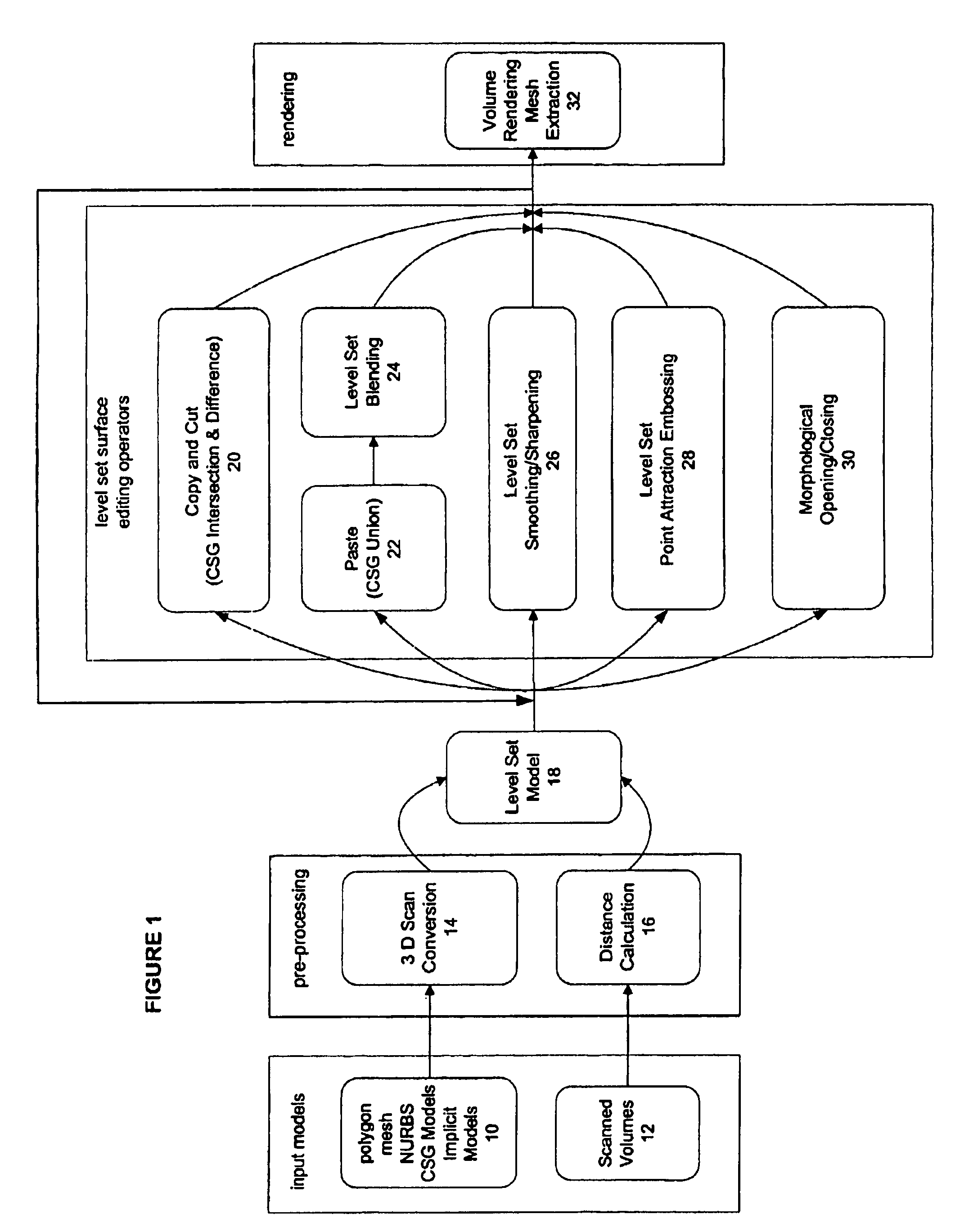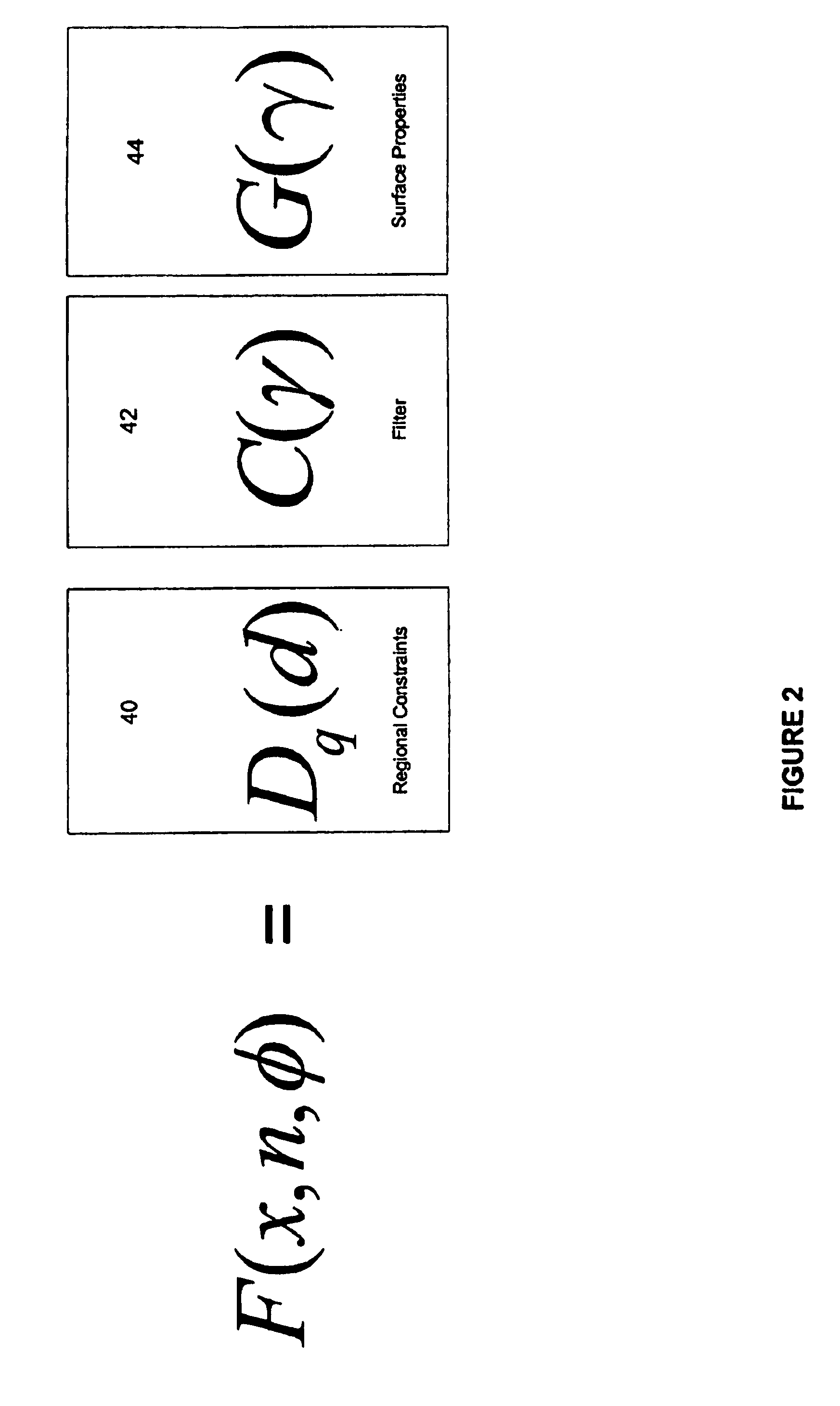Level set surface editing operators
a technology of operator and surface, applied in the field of graphic editing tools, can solve the problems of time-consuming, laborious, error-prone process, and ineffective and proper scanning of models, and achieve the effect of efficient interactive editing sessions
- Summary
- Abstract
- Description
- Claims
- Application Information
AI Technical Summary
Benefits of technology
Problems solved by technology
Method used
Image
Examples
Embodiment Construction
[0037]FIG. 1 is a block diagram that illustrates the system of the present invention. The figure can be viewed as a pipeline, where graphical input models are accepted on the left and processed through the pipeline to the output models to the right. The present system accepts a wide variety of input models. Component 10 shows that examples include polygon mesh, Non-Uniform Rational B-Spline (NURBS), CSG models, and implicit models. Before these models can be used, they are converted into an iso-surface embedded in a distance volume, as indicated by 3D scan conversion block 14. Often only the distance information in a narrow band of voxels surrounding the level set surface needs to be stored. The present invention has a suite of scan conversion methods for converting polygonal meshes, CSG models, implicit primitives, and NURBS surfaces into distance volumes.
[0038]Additionally many types of scanning processes produce volumetric models directly, e.g. MRI, CT and laser range scan recons...
PUM
 Login to View More
Login to View More Abstract
Description
Claims
Application Information
 Login to View More
Login to View More - R&D
- Intellectual Property
- Life Sciences
- Materials
- Tech Scout
- Unparalleled Data Quality
- Higher Quality Content
- 60% Fewer Hallucinations
Browse by: Latest US Patents, China's latest patents, Technical Efficacy Thesaurus, Application Domain, Technology Topic, Popular Technical Reports.
© 2025 PatSnap. All rights reserved.Legal|Privacy policy|Modern Slavery Act Transparency Statement|Sitemap|About US| Contact US: help@patsnap.com



